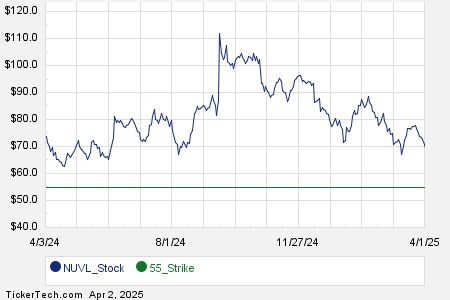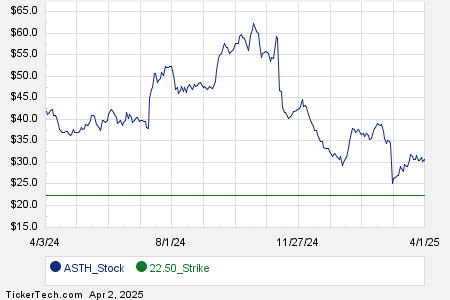Coffee Prices Rise Amid Supply Concerns and Weather Woes
May arabica coffee (KCK25) closed up +9.30 (+2.45%) on Tuesday, while May ICE robusta coffee (RMK25) ended up +103 (+1.95%).
Market Recovery
Coffee prices rebounded from two-month lows this Tuesday, driven by short-covering in futures. This uptick follows weather concerns in Brazil, where Somar Meteorologia has predicted limited rainfall across the country’s coffee-growing areas over the next week to ten days. Additionally, coffee prices received a boost as the Brazilian real (^USDBRL) rose to its highest level in a week and a half against the dollar, discouraging Brazilian coffee producers from selling their exports.
Inventory Tightening
A tightening of coffee inventories is contributing to this upward price momentum. ICE-monitored arabica coffee stocks fell to a month-and-a-half low of 770,476 bags on Monday. At the same time, ICE-monitored robusta coffee inventories dropped to a one-week low of 4,345 lots on Tuesday.
Recent Trend Analysis
In recent weeks, coffee prices have faced pressure, with arabica futures reaching a two-month low on Tuesday and robusta futures dropping to a two-and-a-quarter month low. The market has been affected by diminishing concerns regarding dryness in Brazil. Somar Meteorologia reported that the key arabica-producing region of Minas Gerais received 31.1 mm of rain in the week ending March 29, which is 114% of the historical average for that period.
Export Declines
Continued fears over supply support coffee prices. For instance, on March 13, Cecafe reported that Brazil’s green coffee exports for February fell by 12% year-over-year to 3 million bags. Moreover, on January 28, Conab, Brazil’s government crop forecasting agency, projected that the country’s 2025/26 coffee production would decline by 4.4% year-over-year, reaching a three-year low of 51.81 million bags. Conab has also cut its estimate for Brazil’s 2024 coffee crop by 1.1%, revising it to 54.2 million bags from an earlier estimate of 54.8 million bags.
Negative Forecasts
Conversely, Marex Solutions indicated on March 7 that the global coffee surplus for the 2025/26 season is expected to widen to 1.2 million bags, compared to a surplus of 200,000 bags for the 2024/25 season. Increased global supplies may create bearish sentiment for robusta coffee. The firm forecasts that Vietnam’s 2025/26 robusta production will be 28.8 million bags, an increase of 7.9%, and Brazil’s will rise by 13.6% to 25 million bags.
Drought Concerns Persist
The long-term effects of last year’s dry El Niño conditions may lead to lasting damage to coffee crops in South and Central America. Since last April, rainfall in Brazil has been consistently below average, impacting coffee trees during their critical flowering phase and diminishing prospects for Brazil’s 2025/26 arabica coffee crop. Moreover, the natural disaster monitoring center, Cemaden, has noted that Brazil is experiencing its driest conditions since 1981. Meanwhile, Colombia, the second-largest arabica producer globally, is gradually recovering from the drought conditions spurred by El Niño.
Robusta Production Challenges
Reduced production of robusta coffee also supports price stability. Due to drought conditions, Vietnam’s coffee production for the 2023/24 crop year has fallen by 20% to 1.472 million metric tons, marking the smallest crop in four years. The Vietnam General Statistics Office has noted that coffee exports for 2024 have decreased by 17.1% year-over-year, totaling 1.35 million metric tons. The Vietnam Coffee and Cocoa Association recently revised its estimation for coffee production in 2024/25, lowering it to 26.5 million bags from a previous estimate of 28 million bags.
Global Coffee Export Dynamics
While larger global coffee exports could pressure prices downward, Conab reported on February 4 that Brazil’s coffee exports for 2024 have risen by 28.8% year-over-year to a record 50.5 million bags. Additionally, Vietnam’s General Statistics Office reported a 6.6% year-over-year increase in coffee exports in February, reaching 169,000 MT. However, the International Coffee Organization highlighted a 12.4% year-over-year decrease in global coffee exports for December, totaling 10.73 million bags, along with a slight 0.8% decrease for the October to December period.
USDA Forecasts Mixed Outlook
The USDA’s biannual report issued on December 18 provided a mixed outlook for coffee prices. The USDA’s Foreign Agricultural Service projected a 4.0% year-over-year increase in global coffee production for 2024/25, rising to 174.855 million bags. This includes a 1.5% rise in arabica production to 97.845 million bags and a 7.5% increase in robusta production to 77.01 million bags. However, the USDA forecasts that 2024/25 ending stocks will dwindle by 6.6% to a 25-year low of 20.867 million bags from 22.347 million bags in 2023/24.
For the 2025/26 marketing year, Volcafe has lowered its Brazil arabica coffee production estimate to 34.4 million bags, a decrease of approximately 11 million from its previous estimate. The firm now projects a global deficit of 8.5 million bags for arabica coffee in 2025/26, marking the fifth consecutive year of deficits, wider than the -5.5 million bag deficit forecast for 2024/25.
On the date of publication, Rich Asplund did not have (either directly or indirectly) positions in any of the securities mentioned in this article. All information and data in this article is solely for informational purposes. For more information, please view the Barchart Disclosure Policy here.
More news from Barchart
The views and opinions expressed herein are the views and opinions of the author and do not necessarily reflect those of Nasdaq, Inc.


